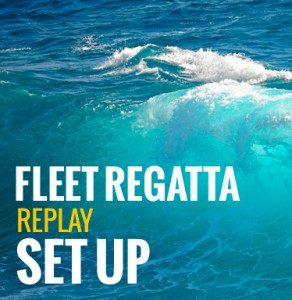We demonstrate the cardinal rule of leeward-mark roundings: start wide and finish tight. Using an example from the 2013 Melges 24 World Championships, we show how failing to start wide and finish tight at the leeward mark puts a boat in a lower lane than her competitors.
Using an example from the 2013 Melges 24 World Championships, we show how failing to start wide and finish tight at the leeward mark puts a boat in a lower lane than her competitors: in that lower lane, she starts the windward leg at a serious disadvantage. It's a great lesson and an eye-popping example of some of the world's best sailors making a classic mistake.
Welcome back to the Race to Win Podcast, brought to your by RaceQs.com. We review 3D regatta replays and analyze racing tactics, rules, and winning strategies. My name is Jacon, and today’s podcast is about the classic rule of leeward-mark roundings: round wide and tight.
This replay is from the third race of the first day of racing at the 2013 Melges 24 World Championships, sailed in San Francisco Bay. You can see boat #3 sailing “hotter” that boat #35, meaning they are sailing closer to the wind and thus faster. They’re trying to advance far enough to get on #35’s breeze. Unfortunately, they get greedy, and it ends up hurting them.
You see boat #35 make a nice wide-and-tight rounding, so they are fully close-hauled when they pass closest to the mark. #3, in contrast, does not do this, and consequently they end up in a lower lane than #35. It’s not a problem at first, but pretty soon the dirty air from #35 prevents #3 from holding the same angle, and they begin to fall behind. Eventually they are forced to tack out.
Let’s take another look from above. We come in right as #3 is crossing #35’s track. They were leading #35 earlier in the leg, and are probably a bit upset that they’ve lost their positioning. You can also see #35 dive even deeper (increase their angle to the wind) as they get close to the mark. This ensures they get a good wide-and-tight rounding, and makes it easier for the guys at the front of the boat to dowse the spinnaker. #3 stays hot all the way in to the mark, and they come out well underneath #35, rather than in clear air. They can’t hold the same point (angle) and begin falling behind, and as we know are forced to tack.
Remember: always take leeward marks wide-and-tight to protect your upwind lane.











